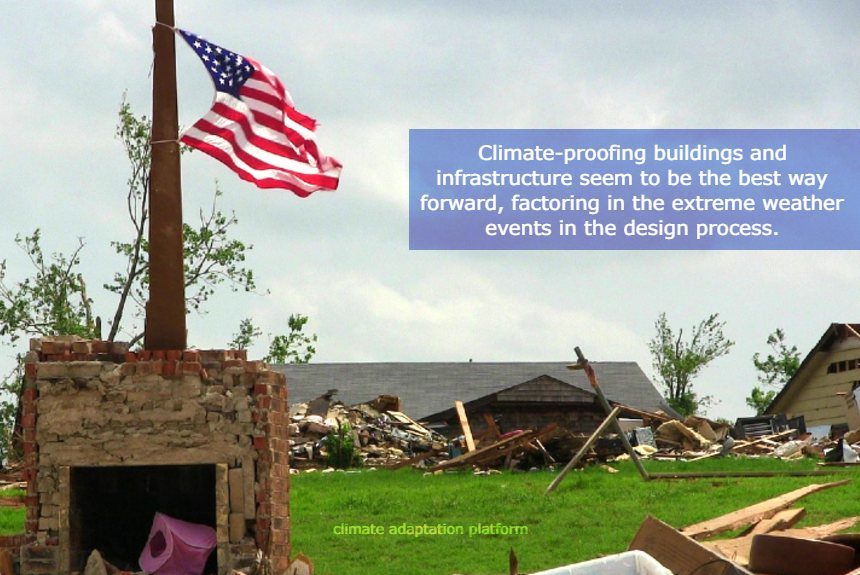Extreme weather events in the US, such as Hurricane Sandy, Snowvember, and the historic flooding along Lake Ontario, which caused several billions of dollars worth of losses, have motivated Nicolas Rajkovich to develop climate-resilient buildings.
Knowing that extreme climate events will increase in frequency, intensity, and duration, Rajkovich leads a laboratory at the University of Buffalo that studies climate change and buildings.
He says that US buildings may not be prepared for future climate-related storms and flooding, consume a lot of energy, and contribute nearly 40% of the global greenhouse gas emissions.
His lab focuses on connecting energy efficiency, renewable energy, and adaptation to climate change. He notes that, yes, Americans have the capacity to protect themselves from extreme weather while cutting their contribution to climate change.
In his article “As the climate changes,” he says that hurricanes, flooding, and storms are the costliest threats of climate change in the US in terms of their damage to buildings and infrastructure.
Rajkovich says the way forward is to make buildings more resilient. However, in his interviews with engineers, architects, and planners, he finds that the majority of them assume that future weather conditions will be similar to the past. The trend shows that this is not the case, he argues.
Suggestions on designing climate-resilient buildings
If buildings and infrastructures have to adapt and be resilient to extreme weather conditions and avoid massive losses in the future, these are some of the recommendations that Rajkovich in his article:
- Re-evaluating architect and engineering standard practices for the design, construction, and operation of buildings;
- Recommendation to change the engineering codes and standards after Hurricane Sandy;
- Raising the first floor of buildings for flood-prone areas;
- Wet floodproofing buildings that would allow floodwater to enter but not damage the building;
- Cooling areas during heatwaves. Heatwaves in the US kill around 600 per year;
- ‘Rethinking’ the design of building walls and roofs to protect occupants from heatwaves, an approach he calls ‘passive survivability;
These are some of the climate adaptation and resilience strategies that Rajkovich suggested that cities and communities prone to extreme weather events may choose to adopt.
He also mentions their design studio at the University of Buffalo, which explores changes to building designs for future climate change.
Climate-proofing buildings and infrastructure seem to be the best way forward, factoring in the extreme weather events in the design process.
This climate adaptation technique will not only prevent massive losses from the consequences of climate change but will also protect the residents, plants, and animals living in urban and population-dense areas.
Sources
Rajkovich, N. (2019, October 24). As the climate changes, architects and engineers need to design buildings differently. The Conversation [Article]. Retrieved from https://theconversation.com/as-the-climate-changes-architects-and-engineers-need-to-design-buildings-differently-119590



Leave a Reply